 Home Home
 Services Services
 Projects Projects
 Resources Resources
 Contact Us Contact Us
| | Getting Your Products to Market
Our main role is to connect you to the people, equipment, research, expertise and funding options that can best advance your project; the intersection of all the expertise, diversity and opportunity can really create exciting results. We want to help companies create a sustainable biomaterials industry in Alberta utilizing Alberta’s agriculture and forestry biomass for the betterment of our economy and environment.
Alberta Biomaterials Initiative works with you to:
- Advance new and emerging products and technologies
- Create renewable products contributing to low environmental impact
- Establish primary processing capacity in Alberta fibre supply chains including hemp and flax
- Access high value market opportunities with upward trending growth
- Find pathways to link you to material supply, research, equipment, technical expertise, and market and funding information
- Enable value chain and cluster connections and symbiosis
- Contribute to rural development growth and investment in Alberta
- Promote bio-based solutions for a circular economy
|
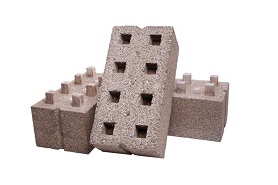
Figure1: Just BioFibre Structural Solutions - Super SSR modular hempcrete block wall system with biocomposite structual supports | 
Figure 2: Synermulch Erosion Control Producers Inc. - hydro seeded flax erosion control product |
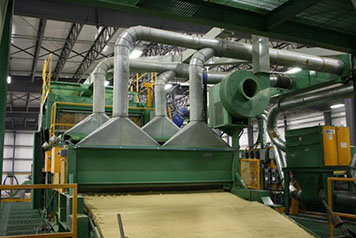
Figure 3: BioComposite Group Inc. - Terrafibre hemp & flax fibre mats for automotive biocomposite door panels | 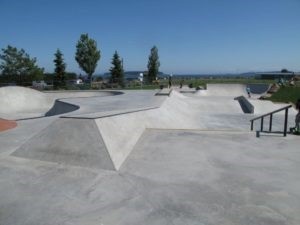
Figure 4: Canadian Greefiels Technologies Corp - NForce - Fibre - hemp fibre reinforcement for Concrete |
Commercialization
Alberta Biomaterials Initiative through Bio-Industrial Opportunities Section, Agriculture and Forestry and partners maintain a strategic wealth of information to enhance the biomaterial industry in Alberta. Alberta Biomaterials Initiative has focused their efforts to offer clients a place where they have access to the range of testing they require to bring their products to market.
Analytical Services
- Rapid analysis of poplar, hemp, flax, wheat and triticale straw powder samples for cellulose, hemicellulose, lignin, ash, and extractives content
- Rapid analysis of decorticated hemp and flax fibres powder samples for bast fibre content
- Material testing and evaluation (strength, impact, hardness, fatigue/creep life)
- Durability testing (wear, corrosion, permeability, weathering, cold/hot)
- Performance testing (R value, fire)
- Metallographic and micro-analysis (optical microscopy; SEM)
- Chemical and thermal analysis
- Prototype testing
- Mechanical testing
- Analysis of chemical composition of lignocellulosic biomass
|
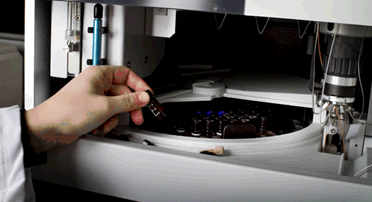
Equipment
NIR Spectroscopy
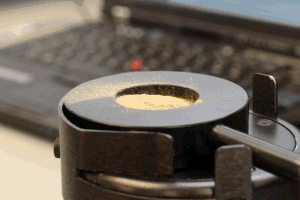
The Near Infrared Spectroscopy is used to rapidly predict the NIR Spectroscopy chemical composition of cellulose, hemicellulose, lignin and ash content of biomass, for example. This equipment reduces the amount of time to test the chemical composition of biomass. It can also be used to predict the cleanliness in bast fibre such as hemp and flax. The test can be completed in a few minutes and provides valuable information that can be used by a client to determine yield and chemical cost. This instrument is portable and can be moved. It is located at Bio-Industrial Opportunities Section, O.S. Longman lab in Edmonton.
Extruder
Extrusion is a process used to create new materials or to generate a new property. At Bio Processing Innovation Centre the Century CX-40 HT extruder is available to compound material and extract value-added chemicals from biomass.The extruder has been used to create bioplastics out of potato and corn starches, for the extrusion of hemp hurds, and to incorporate agricultural fibres into plastics to improve the strength of the plastics. The extruder is pilot scale which allows companies the ability to scale up their concept before commercialization. The average production per hour is 100 to 150 pounds. The extruder has a rated capacity of 1,500 pounds per hour with powder inputs. The 1815 mm screw shafts can be designed with screw elements to convey, knead and mix at any point through the 11 barrels. On the barrel sections, you are able to side feed, vacuum vent, atmospheric vent and inject liquids. These sections and screw elements are interchangeable with infinite capabilities. The extruder is located in Bio Processing Innovation Centre, Edmonton, Alberta.
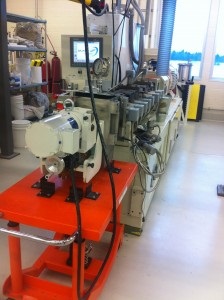
- Compounding: blending and compounding of natural fiber with (bio) polymer to make new materials.
- Reactive vessel (Extraction and pre-treatment of raw material): BIOS has developed a novel continuous, solvent and time saved Extrusion Assisted Extraction process to extract value-added components from biomass, ag-waste stream. The extruder can pre-treat biomass to improve efficiency of downstream process.
|
Thermal reactor: take the advantages of well temperature and pressure controlling of extruder to help clients develop new product and process.
HAAKE™ MiniJet Pro -- Injection molding machine
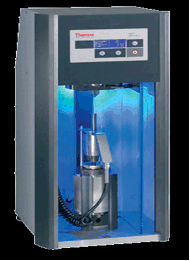
BIOS has a new add-on to its biomaterial program. The Thermo Scientific™ HAAKE™ MiniJet Pro helps clients optimize their development process, enabling mechanical properties testing of specimens from 2 ml up to 12.5 ml. Several molds such as ASTM D638 Type IV and ISO 527-2-1A are available. Other standardized molds for common mechanical testing as well as customized mold can be ordered upon request. To ensure a consistent and reproducible sample specimen, the HAAKE MiniJet Pro system is equipped with precise microprocessor controls. Strict management of the post-pressure during sample creation enables optimum compensation for material shrinkage due to the cooling of the sample. It is located at Bio-Industrial Opportunities Section, O.S. Longman
- Specimen: Several molds such as ASTM D638 Type IV and ISO 527-2-1A are available.
- Small prototype: Other standardized molds for common mechanical testing as well as customized mold can be ordered upon request.
|
Material characterization and property analysis BISO has the capability to characterize and analyze the property of raw/processed materials to see if the material formulation and process is good enough. Some of main instrument is as follows:
- Tensile, flexural, and compressive test by Instron
- Gardner Impact test
- Surface area and pore size analysis by Nova 4200 analyzer
- Particle size profiling by LS 13 320 Laser Diffraction Particle size analyzer or Sweco Sieve Shaker
- Spectral characterization by FT-IR and NIR
- The Near Infrared (NIR) Spectroscopy is used to rapidly predict the chemical composition of biomass. This equipment reduces the amount of time to test the chemical composition of biomass. It can also be used to predict the cleanliness in bast fibre such as hemp and flax. The test can be completed in a few minutes and provides valuable information that can be used by a client to determine yield and chemical cost. This instrument is portable and can be moved.
|
Pelletization
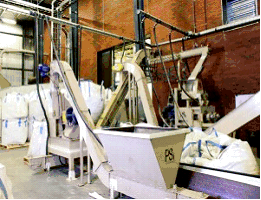
We have both of unit pelletizer and PSI pelletization system at Bio Processing Innovation Centre and Vegreville, respectively. The PSI includes a hammer mill, pre-steamer, pelletizer and cooler. It had been used to prepare pellets made with oat hulls and wheat straw, for example. The pellets could be used as fuel pellets or to densify material for downstream processing such as chemical extraction or as feed into an extruder for bioplastics. It operates at a large scale of 100 kg/hour.
- Hammer mill
- Conditioner
- Pelletizer
- Pellet durability test
- Bulk density
- Drying
|
Pilot-Scale Decortication Facility
The Pilot-Scale Decortication Facility in Alberta is North America’s largest research and development facility. This is the first process required in fibre manufacturing.
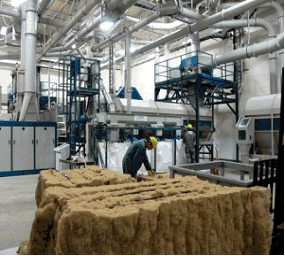
The unit was commissioned by the Government of Alberta and was manufactured and assembled by Belgian company, Van Dommele (now known as Cretes). It can process one tonne of hemp or flax straw per hour into various grades of fibres that can be used for commercial bioproducts.
The pilot plant is flexible in terms of feedstocks it can accept and the quality of materials it can produce. For example, feedstocks can be processed up to 95% purity for fibre (as required for many automotive applications) or to 75% purity for fibre (as required for many geotextiles). Specifications for hurd and mixed fractions are also available. The pilot plant has a guillotine chopper, screens, cleaning system, baler and dust handling/bag house system. The equipment is available for use and is located at Innotech Alberta in Vegreville, Alberta.
Vecoplan Shredder
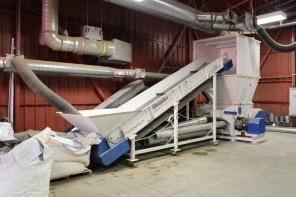
The Vecoplan Shredder includes a conveyer, chopper, fan and bag house. The system has been used in a number of projects to prepare biomass for use in pellets, biocomposites and paper. As an industrial shredder it can process biomass for the biocomposite, biofuel and biochemical industries and can shred biomass at 100 kg/hour. The equipment is housed at Alberta Innovates in Edmonton, Alberta.
Bleaching Tower & Reaction Vessels
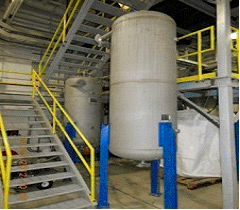
This system is used to bleach pulped fibres for use in paper, toweling and tissue. It is part of a system of equipment housed at Alberta Innovates in Edmonton, Alberta. The bleaching tower system could be connected with the chemical or mechanical pulping pilot plants at Alberta Innovates. A client could access this equipment to produce demonstration scale amounts of pulp. This is a unique facility in North America as it can produce material at 100 kg/hour a scale that few can currently achieve.
Pierret Chopper
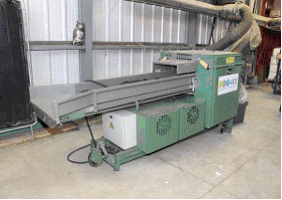
This equipment chops material to a specific length and prepares it for further processing. It does not require chemicals to prepare the fibre and does not produce any side streams. It produces material in the range of 10 kg/hour and a sample could be taken from this facility. The Pierret Chopper has a conveyor and a guillotine chopper. It is located at Alberta Innovates Edmonton, Alberta.
Stationary Biomass Chopper
The chopper includes an unroller and rotary chopper and it is used to reduce the size of round bales of straw. It can process a variety of biomass feedstocks and it could be used as a preprocessing step for the biochemical, biomaterial or biofuel industry. This equipment could be moved to provide preprocessed materials for other fibre processing systems. It provides processed material at 100 kg/hour. It is located at Innotech Alberta in Vegreville.
Willow Harvester
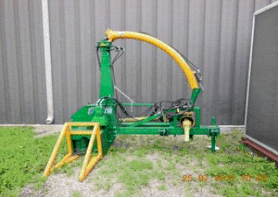
The willow harvester is an infield piece of equipment that is pulled by a tractor. It cuts down tall crops such as willow and hemp and then chops the material into smaller pieces. The chopped material is blown back onto the field in rows or into a truck. Since it is mobile it is available for use throughout the province. The material this equipment produces could be processed further. |